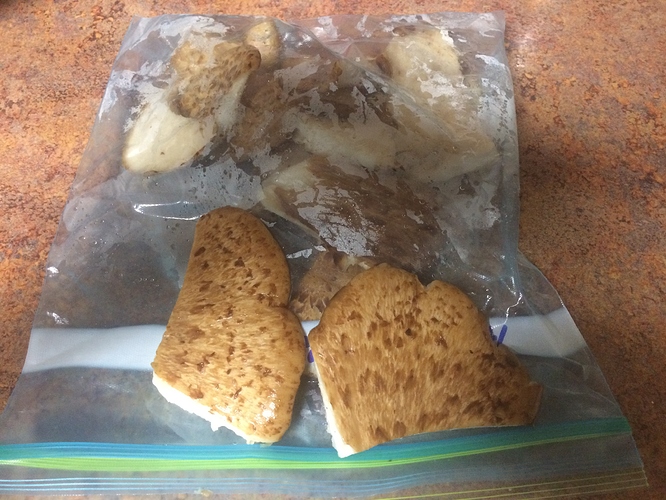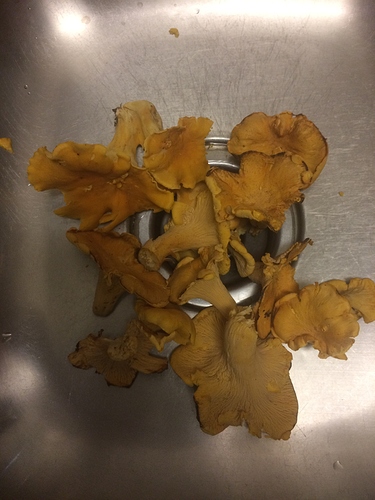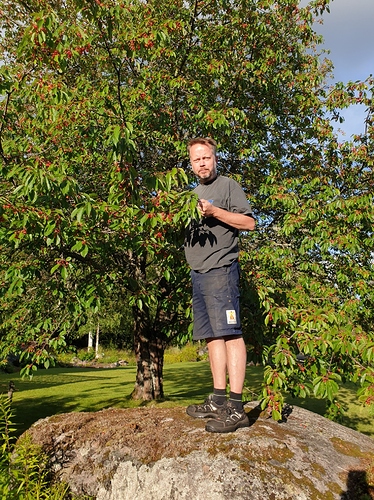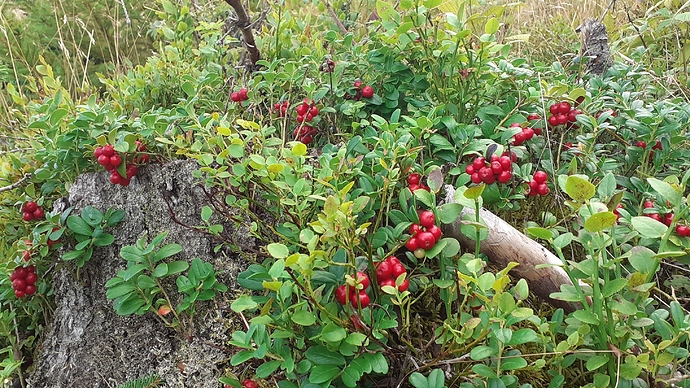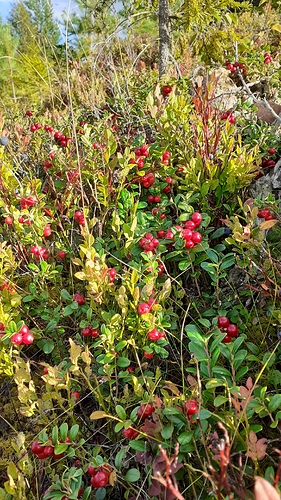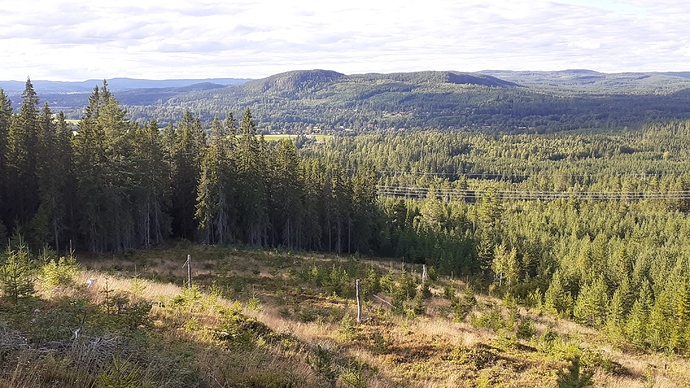The squash bugs will find your basement they love it down there. The potatoe bugs dig down in the soil here and the frozen ground doesn’t kill all of them. Not sure they would like your crazy deep freeze though.
Potato bugs do just awesome here. My only salvation is that the neighbours thinned out to the point that there is no resident population, they need potatoes every year to survive here. They can probably fly at least a couple of miles. But I believe they are hardy at least in zone 2, so any agricultural area will do.
I think I’ve heard of squash bugs in Winnipeg, they must be hiding out as you describe. I think I’m fine without them. I could always go out and poke holes in squash if I needed the excitement.
Corn borers finally arrived here about 25 years ago, and the corn smut, but they too can only jump so far from field to field. The smut is actually a valued mushroom in Mexico, btw, called huitlacoche…
Hi Don, I use it all the time for weed control. The problem is my truck is down for needed rebuild of wore out parts. So my weed killer is all used up. But it works great when I have some from dumping my tar water.
Bob
Not on plants, but l fired a charcoal kiln just for the distilates. The goal being horse flye repelant on our horses and goats. Works perfect but needs dayly aplication.
I tried it and poisoned some squash to death.
Try some of the condensate in a patch of weeds. Carefully learn how to use it.
Test it first by painting some full strength on select weeds or just a leaf or two. You will be
amazed at just how potent this stuff is. Then dilute it 50 percent and do another
paint brush test. Continue dilution until your results are positive without
destroying all living matter around it! Remember, this stuff flooded around plants
will destroy the roots and plants and you’ll have to wait a year to plant any thing
in that spot.
.
I thought I read some time back that if you dilute it 200 to 1 it acts like a fertilizer.
I understood that was only for rail condensate not hopper juice.
Hi guys,
I had this article in my computer. I think it can help.
The Open Agriculture Journal, 2010, 4, 111-118 111
Abstract: Archeological studies have found that pyrolysis liquids were already used in the time of the Neanderthal. Wood vinegar and other slow pyrolysis liquids are produced as a by-product of charcoal production. However, future business ideas may be the other way round as pyrolysis liquids may replace synthetic chemicals in the form of pesticides and biocides.
Directives and regulations related to the sustainable use of pesticides govern and direct plant protection strategies towards a lower use of synthetic chemicals. It is hoped that many mega trends of global policies will boost the use of plant based products given that a reduced reliance on fossil fuel is a general target in the global food and feed production economy. Pyrolysis technology has been actively studied and developed around the world and is linked to the development of the knowledge based bio-economy. The importance and social impact of pyrolysis technologies will also be enhanced because it is a practicable technique in the sustainable use of wastes and biomasses. However, very little scientific evidence is available to support efficacy claims of wood vinegar and toxicology assessments of the products used. Wood tar has been investigated a bit more thoroughly. The aim of this review was to clarify the potential of slow pyrolysis liquids in agricultural use, in particular, in pesticide applications. In addition, some of the main challenges in developing novel bio control technologies are discussed and the barriers in the commercialization of biological control agents are revealed.
Keywords: Wood vinegar, pyroligneous acid, wood tar oil, essential oil, biorational, pesticide, biocide, wood preservative, slow pyrolysis, biochar, knowledge based bio-economy.
-
BACKGROUND Globally changing pesticide policies and integrated pest management programs (IPM) aim to reduce pesticide risks on the environment and human health. It has been clearly stated that the hazards to health and the environment from the use of pesticides must be minimized and dependence on chemical control needs to be reduced. In Europe, a thematic strategy on the sustainable use of pesticides was adopted in 2006 by the European Commission [1] and as such, a new directive was put into force in 2009 [2]. Replacement of synthetic chemicals with “alternative plant protection techniques” has been mentioned in numerous policy documents related to the use of pesticides [3]. The highest demand on natural pesticides is in the organic farming where synthetic chemicals cannot be used for plant protection [4, 5]. In Europe, replacement of chemicals with biological control agents has been slow but in Asia and the USA, botanical pesticides have already been placed on the market as green chemicals [6]. At the same time of increasing European environmental concern, the development of the Knowledge Based Bio-Economy (KBBE) concept clearly highlights that products of plant cells could replace synthetic chemicals in the future and substantial research will be focused on bio-economy and the development of novel products [7]. One of the fast growing areas of bio-business is based on the use of pyrolysis technologies. Charcoal (biofuel and biochar) has been the main product of the conventional pyrolysis for a long time in most of the cases but recently byproducts of the process (green chemicals) have become more and more important. Locally produced wood vinegar has been used as a pesticide in countries where synthetic chemicals have not been available, or where the price of the chemicals has been too high for small scale farmers. Globally, the need to minimize the environmental risks resulting from pesticides leaching to ground water and waterways has bolstered the use of wood vinegar as a biocide and pesticide [8]. In spite of pesticide production, other factors, such as the production of green fuel from agricultural and forestry residues have enhanced the growth of pyrolysis bio-business to become an important part of KBBE and chemical production [9]. In many of the Asian countries, the tradition of utilizing botanicals has a long history [10] and a vision to develop biobased business strategies is one of the main streams of economic development [11, 12]. Despite the long history of pyrolysis use, only a limited number of review articles focused on pyrolysis liquids as pesticides or biocides were found. In writing this review the most useful article found gives an overview of wood vinegar used as a biocide and pesticide in agriculture, including plant production and protection as well as its role in animal husbandry. This conference paper as many other documents, include examples how to use wood vinegar but do not include scientific evidence to support all the examples. Plant essential oils are more thoroughly studied as a pesticide than wood vinegar. Isman [14] provided a source of valuable information with regard to the use of essential oils as an insecticide, fungicide, repellent, nematicide and bioherbicide. Health and environmental impacts were tackled as well as commercialization of essential oil-based pesticides. The same author has also published a review article [15] which demonstrates the regulatory barriers of commercialization of bio-pesticides. The aim of this paper was to clarify the potential of slow pyrolysis liquids in agricultural use, in particular, in pesticide applications.
-
HISTORY OF PYROLYSIS LIQUIDS
2.1. Early History of Using Birch Bark Pitch History of using and producing birch tar dates back to the Middle Palaeolithic time of Neanderthal. The tar was manufactured by a thermal process, probably pyrolysis, from birch bark to yield pitch. Birch bark pitch was used as adhesive to haft tools and weapons. The earliest finds come from Germany and Italy and are estimated to be more than 80000 years old [16-18]. From Mesolithic (10000-5500 BC) and Neolithic (55002000 BC) dwelling sites in northern Europe, there is much evidence of birch bark pitch lumps with human teeth impressions. It is not clear if the pitch was used only for chewing purposes, or was it part of manufacturing and processing of pitch. There is ethnographical evidence that birch bark pitch was used for cleaning and refreshing teeth. It is possible that pitch was used for medical purposes and treating dental conditions [19, 20]. Onwards from the Neolithic period, birch bark pitch was used as a universal adhesive and mastic. It was used for repairing, waterproofing and sealing ceramic vessels. Its usage and manufacturing was widespread in prehistoric and medieval times in Europe such as carbonization, destructive distillation, and dry distillation are used for this kind of thermal process [24]. The pyrolysis of wood was probably human’s first chemical process [25]. It is known to have been practiced by the ancient Chinese. The Egyptians, Greeks, and Romans made charcoal by wood carbonization, and collected the condensable volatiles for embalming purposes and for filling joints in wooden ships. The most important product of carbonization is charcoal. Industrial carbonisation is carried out predominantly in large retorts with capacities up to 100 m3 of wood [26]. The average practical yields are about 35 wt% of wood, and depend on the wood species and wood size, carbonization system, processing time and final temperature. Beech wood is the dominant raw material for the production of charcoal in Europe. In addition, oak, ash, alder and maple are used. In North America, the raw materials include also hickory, elm, sycamore and some softwood species. In the Nordic countries minor amounts of birch is used, and in South America and South Africa, charcoal is produced mainly from hardwood species of Eucalyptus. Until the late 1800’s, wood carbonization was the major pyrolysis process, and supplied the increasing amounts of charcoal that were required for iron ore smelting [25]. The iron furnaces in the USA used charcoal exclusively until the 1840’s, and somewhat later the share of the iron market produced with charcoal was increasingly replaced by that of coal and coke iron. By the 1900’s, destructive distillation of wood was practiced widely on a commercial scale by heating wood in closed retorts. The vapours produced were condensed to give tar (wood tar or sedimentation tar) and an aqueous layer (pyroligneous acid). In the retorts about the same quantity of the major products charcoal and raw pyroligneous liquor (crude wood vinegar) are produced. This liquor is first settled and then decanted from the sedimentation tar. The tar can be fractionated into tar oils and tar pitch. Raw pyroligneous acid contains primarily methanol, acetic acid and soluble tar. By the turn of the century, wood was the only source for the latter chemicals. The predominant use of wood as the principal raw material for the organic chemicals industry was short-lived [25]. Alternative processes for the production of acetone, acetic acid, and methanol were soon developed, and the petrochemical industry almost completely replaced the wood distillates market. Under present conditions, the production of these chemicals from wood distillates is rarely economically attractive in the Western Hemisphere. The rest of the world still uses wood carbonization to yield charcoal for heating, cooking, and industrial purposes, while chemicals are only occasionally produced as by-products. Traditionally, charcoal was produced from wood using charcoal piles, earth kilns, or pit kilns [25, 27]. Hardwood was carefully stacked in a mound or pit around a central channel, and then covered with dirt, humus, moss, clay, or sod. The process was slow and it could take about 6 weeks before completion. Later, permanent kilns were introduced producing higher yields of charcoal. Brick or masonry was used to cover and contain the wood during carbonization, and doors were used for charging wood and removing product. Holes and chimneys were optimally located to regulate air flow and discharge flue gases. The retort furnaces were later developed to produce charcoal on a commercial scale and the recovery of by-products was possible. Different discontinuous and continuous systems are used. All commercial processes operate at near-atmospheric pressure. 2.2.2. Destructive Distillation of Pine Destructive distillation of pine wood was once of great economic importance in the manufacture of naval stores [25]. Naval stores included turpentine, as well as pitch, tar, and resin, which were indispensable in shipyards for protecting surfaces and caulking seams of wooden ships. The destructive distillation process for pine was similar to that used for hardwoods, except that the products were charcoal, turpentine, pine oil, dipentene, pine tar, tar oils, and pitch. Charcoal was produced as a by-product residue. Softwood distillation gives lower yields of acetic acid and methanol than hardwood distillation [24], therefore longleaf and slash pine, especially in the form of recovered stumps, were favoured because of their high resin content. 2.2.3. Fast Pyrolysis Since the oil price crisis in the early and late 1970’s, considerable effort has been directed toward the development of processes for producing liquid fuels from biomass. Fast pyrolysis is one of the most viable methods for such conversion [28-31]. During fast pyrolysis, the biomass is rapidly (1000 ºC/s) heated to about 500 ºC during very short vapour residence time (< 2 s) and the vapours then rapidly cooled to give a dark brown fluid liquid called bio-oil, pyrolysis liquid or pyrolysis oil. A typical product distribution for dry barkfree wood is, on average, 64 wt% organics, 12 wt% pyrolysis water, 12 wt% char, and 12 wt% product gas.
2.3. History of Wood Vinegar and Tar as Pesticide Use of plant derivatives in agriculture dates back at least two millennia in ancient China, Egypt, Greece and India. Wood vinegar also has a long history and it has been used daily, for example, in Japan as a result of numerous health claims related to the product. Since the 1930’s, wood vinegar has also been used in agriculture as a fertilizer and growthpromoting agent [32]. Although the word ancient, related to the use of wood vinegar, has been mentioned in many documents and on web pages it was difficult to find good scientific evidence to attest the first records of wood vinegar used as pesticide. Probably only few documents are available or the information has been written in languages and in countries difficult to reach via modern information retrieval. -
EFFICACY AND USE OF WOOD VINEGAR IN AGRICULTURAL USE
3.1. Chemical Composition of Wood Vinegar The characterisation of liquid products from pyrolysis has been continued a long time. The products contain many organic components and the composition is very complicated. During the last twenty years the interest has mainly been focused on the liquid product from fast pyrolysis. According to literature [24-26] the main organic components of wood vinegar are methanol and acetic acid. Other components are acetone, methyl acetone, acetaldehyde, allyl alcohol, furan and furfural, and formic, propionic and butyric acids. The settled tars can be fractionated into light and heavy oil fractions. The former consists of aldehydes, ketones, acids, and esters. Various phenols, including a high proportion of cresols and pitch, are present in the heavy oil fraction. The chemical composition, physical properties and fuel oil quality of fast pyrolysis liquids have widely been developed and described by Oasmaa et al. in many articles [29, 33-36].
3.2. Efficacy of Wood Vinegar as Pesticide A careful literature search on the efficacy of wood vinegar used as a pesticide indicated that only a limited number of scientific publications are available and in many cases the scientific evidence for the marketed products is weak. However, wood vinegar has been widely used as pesticide based on old traditions and knowledge of users and local producers [37]. 3.2.1. Wood Preservative Many control technologies has been developed to inhibit fungi that cause discoloration on wood material. Velmurugan and co-authors [38, 39] have published scientific evidence that wood vinegar made from bamboo and broad leaved trees were effective against sapstaining fungi at minimum concentrations (0.10-1.0%). Results revealed that compounds of Chikusaku-eki and Mokusaku-eki markedly inhibited fungal growth but the exact mode of action of active compounds need to be studied further. Chikusaku-eki and Mokusaku-eki have been reported to possess both antifungal and antioxidant properties as well as potential to be used as natural preservative in wood industries. Extracts are easily available, inexpensive and believed to be non-toxic to the environment. The same products have been used as disinfection, antibacterial and deodorization materials in agriculture and horticulture [40]. However, Chikusaku-eki is mainly used as an ointment for the treatment of scabies, eczema, atopic dermatitis and other skin diseases [41]. Wood tar also has potential as a wood preservative alone or as a component of preservatives [42]. Nakai and co-workers [43] reported that pyrolysis of wood and wood-based wastes is considered to be one of the promising methods of supplying charcoal as solid material and liquids containing a number of valuable chemicals. They attested that some of pyrolysis chemicals may have importance in developing new wood preservatives against fungal degradation. 3.2.2. Fungicide Many publications cite that pyrolysis liquids may be effective fungicides in agricultural applications. The wood vinegars produced from biomasses such as inner coconut shells, bamboo and Eucalyptus wood effectively controlled fungal growth. The antifungal efficiency of wood vinegars was reported to be strongly dependent on their phenolic compounds contents [44]. Importance of phenolic components of vinegar pyrolysed from wood chips has also been reported by Inoue et al. [45]. Preliminary results of a laboratory experiment in Finland indicated that birch tar oil may effectively control growth of potato late blight fungi (Phytophthora infestans) [46]. Furthermore, Jung [47] demonstrated that pyroligneous acid exhibited antifungal activity against some plant pathogens. He also concluded that the acid can substitute a synthetic fungicide and thereby reduce the use of agrochemicals for the control of Alternaria blotch of apple. 3.2.3. Repellent and Insecticide Wood vinegar has been widely used to repel insects from plants and households in Thailand [37] and it is easy to find pyroligneous products marketed on the Internet as an insect repellent. Efficacy of wood vinegar as an insect repellent has not been widely studied or published and thus the scientific evidence is minimal. However, Strong [48] in 1973 reported good results when wheat seed were treated with hardwood tar oil to repel birds, rodents and insects. Hardwood oil was also found to be toxic to all the tested insects. Very similar effects were found when pyroligneous acid was used for controlling insects from sweet corn plots [49]. Wood tars pyrolysed from alder, larch and birch were effective repellents for control of the vole (Clethrionomys rufocanus bedfordiae) in an experiment in Japan [50]. In addition, scientific evidence reported in Finland demonstrated that birch tar oil effectively repelled slugs (Arion lusitanicus) and snails (Aranta arbustorum) [51]. The potential of botanical oils for insect control is well known [52] and botanical insecticides have become increasingly utilized especially in developing countries [15]. Wood vinegar exhibited high termiticidal activities against the Japanese termite Reticulitermes speratus [53] and the authors concluded that an ortho substituent of phenol played an important role in termiticidal activity. Preliminary investigation in Greece showed that one spray application with birch tar oil (1% v/v aq solution) killed 95% of aphids (Myzus persicae) on egg plant in a greenhouse experiment. The results of a project [54] in Finland revealed that the birch tar oil may repel egg laying psyllids (Trioza apicalis) but not flies (Delia floralis). Beetles and mites could not be controlled with the oil and it was also non-toxic to predatory mites (Amblysius). Information on wood vinegar application with husbandries suggests repellence of flies, tick and fleas and killing of external parasites [13]. 3.2.4. Wood Vinegar as Herbicide and Plant Growth Enhancer Essential oils are known to be effective herbicides [55]. Similarly birch tar oil has shown a herbicidal effect on numerous species of weeds [56]. A preliminary field experiment indicated that pyrolysis liquids made of birch wood can be used for the control of broad leaved weeds [57]. However, there is a lack of scientific evidence to prove the efficacy of vinegar or wood vinegar as herbicide and as such highlights that more research is needed to justify all the claims found via a Web search, i.e. wood vinegar at high concentrations can kill plant cells and low doses may stimulate plant growth. Field experiments conducted in China have shown that wood vinegar, made from biomass residues, can be used as a foliar fertilizer improving the yield and quality of celery [58]. A mixture of charcoal (biochar) and pyroligneous acid has also shown to enhance soil fertility and the growth of bedding plants [59]. Bamboo vinegar is known to simulate plant growth depending on the pyrolysis temperature [60]. Treatments with bamboo vinegar have also demonstrated an increase in vegetable growth [61]. Other studies have concluded that wood vinegar in organic farming can have a variety of applications, including pest control, improving soil fertility, and plant growth promoter or inhibitor. A substantial number of claims have been presented in the form of commercial advertisements, which indicates that more research is urgently needed to improve the scientific basis of the use of wood vinegar in agriculture. 3.2.5. Wood Vinegar as Feed-Stuff It has been suggested that wood vinegar can improve the performance of weanling pigs by improving the nutrient digestibility and reducing harmful intestinal coliforms. Moreover, the performance of pigs fed with wood vinegar was found to be better than those fed with organic acid [62]. Feeding of calves can be activated with charcoal containing wood vinegar. The vinegar liquid called Nekka-Rich showed antiprotozoan activity against Cryptospiridosis parvum oocysts. Calves that were fed milk enriched with Nekka-Rich showed recovery from diarrhea 1 d after the start of treatment [63]. Mixture of charcoal and wood vinegar was proved to be useful as an aqua feed [64] as well as a useful component in chicken feed [65].
3.3. Toxicology of Pyrolysis Liquids Coal tar has been used for dermatological conditions for more that 2000 years, but also many publications refer to the use of wood tar. Tar ointments have been used in the treatment of psoriasis, scabies, sarcoidosis and dermatitis [66]. Many kinds of raw materials (coal, wood, forestry and agricultural wastes) have been used for tar making and thus, quality and composition of pyrolysis liquids used in toxicological tests has been variable. Carcinogenicity of medicinal ointments containing crude oil, petroleum products, coal tar or wood tar has been studied since 1963 and the health risks associated have been reported in several documents [67, 68]. Occupational studies have demonstrated the carcinogenic effects of tar, however, epidemiologic studies do not confirm similar outcomes when used topically [66]. In most of the reports demonstrating negative impacts of tars the active ingredient has been coal tar [69]. Due to individual manufacturing techniques, tars differ in chemical composition and as a result, the toxicological studies are divergent [70]. Evidence of wood vinegar toxicity is lacking because it has not been as widely studied as tar products. However, Kimura and co-workers [41] have reported that one of the most widely used wood vinegar Chikusaku-eki did not act as tumor promoter. Thus, chikusaku-eki was not carcinogenic/co-carcinogenic in the in vitro cell transformation assay after being diluted more than 104-fold with water. The information found does not fully support the toxicological risk analysis of biopesticides made of wood vinegar because most of the published information is based on data collected from experiments where tar (coal and wood based) products have been used to smooth skin intentionally. The same kind of treatments have seldom been carried out with wood vinegar and only rarely with synthetic pesticides. Thus also comparison of wood vinegar toxicity to pesticide toxicity is vague. Toxicological assessment of wood vinegar should be performed specifically for every plant species, taking account the impact of pyrolysis technique on the chemical composition of the liquid.
3.4. Ecotoxicology Hagner et al. [71] concluded that a birch tar oil (a mixture of wood vinegar and birch tar) showed no consistent, direct negative effects on enchytraeid worms, nematodes or soil microbial biomass when used at concentrations between 500-1360 L ha1. Instead, 100% birch tar oil (5001360 L ha1) showed a positive effect on microbial activity immediately after application, suggesting that readily utilized substances in the oil were rapidly consumed by microbes. Furthermore, the high LC50 value for the earthworm A. caliginosa indicated that the oil was practically non-toxic to earthworms. The influence of charcoal and smoke condensates, i.e. pyroligneous acid ¶, on microbial activity in a highly weathered Amazonian upland soil was assessed via measurements of basal respiration (BR), substrate-induced respiration (SIR), and exponential population increase after substrate addition. It was observed that BR, microbial biomass, population growth and the microbe’s efficiency increased linearly and significantly with increasing charcoal concentrations (50, 100 and 150 g kg-1 soil). Application of PA caused a sharp increase in all parameters. Furthermore, it was concluded that the condensates from smoke contain easily degradable substances and only small amounts of inhibitory agents, which could be utilized by the microbes for their metabolism [72]. It has been found that aquatic organisms appear to be variably responsive to birch tar oil but the oil is much less toxic to most aquatic organisms than, for example, Malathion or Glyphosate. Hagner et al. [73] concluded that a wide range of aquatic organisms are, to some extent, sensitive to the birch tar oil but it does not pose a severe hazard to aquatic biota. Similarly, plant essential oils have been demonstrated to be environmentally friendly.
3.5. Wood Vinegar Market Pyrolysis liquid from fast pyrolysis is a feasible alternative in replacing fossil fuels in European pulp and paper industry [74, 75]. The European pulp and paper industry has a potential to build up to 50 pyrolyzers integrated to fluidised bed boilers. In the short-term, pyrolysis oil market is in fuel oil and natural gas replacement in lime kilns and boilers, while long-term RTD is focused on transportation fuels. The only commercial application for fast pyrolysis is still, however, the Red Arrow Products Company plants producing food flavourings, the capacity being around 1 th-1 [76]. Integrated energy and chemical production plants are now recognised as having considerable potential for maximising economic viability of the fast pyrolysis plants. In Japan, the biochar market is developing very fast and may boost the production and use of wood vinegar in agriculture. Respectively, plans to develop an eco town concept will act as a driving force stimulating the use of carbonization as an element of environmental technologies. The global market value for pesticides was estimated in the year 2000 at 32 billion US$, with the share of developing countries around 3 billion US$ [77]. Biological control products have 2-3% of the world-wide annual turnover of plant protection products [78]. The market of biopesticides and biorationals began rapidly increase in the USA by the end of 1999, when EcoSMART Technologies registered over a dozen products [14]. The biorationals data base [79] does not include wood vinegar which may indicate that in many countries the commercialization of botanicals has been focused on essential oils more than on pyrolysis liquids. In Asia, the wood vinegar market is developing differently. Currently, 189 wood vinegar products have been listed on a commercial home page of which 128 come from China. The wood vinegar based pesticide market is very progressive in Japan and in numerous other Asian countries such as Thailand, Cambodia, and China. The registration procedure for pesticides differs between countries and as a consequence, pyrolysis liquids have been listed differently. In the USA, vinegar has been listed as a minimum risk pesticide but not wood vinegar. Pine tar oil has been registered for pesticide use in the USA, Australia, New Zealand, Hungary, and Canada, where as tar acid oil is only registered in Australia, India, New Zealand and the United Kingdom. Juniper tar has been listed for use only in New Zealand. In Europe, the wood vinegar market is not comparable to the Asian market. -
CONCLUSIONS AND FUTURE PERSPECTIVES
4.1. Supporting Factors for the Use of Wood Vinegar At present, many driving factors support the development of biological plant protection technologies and use of wood vinegar as a pesticide. Environmental concern related to widespread use of synthetic pesticides is one of the supporting factors, as well as the global policy to diversify the use of organic waste as biofuel and sources of green chemicals. Pyrolysis technology may offer a “greener” solution to produce energy and chemicals using local resources: plant material, labour and solar energy absorbed by plant cells – the factory of green chemicals. Both FAO and WHO have strengthened the discussion on the global need to minimize reliance on fossil fuels as well as the need to improve food and feed production based on locally available resources. According to the new EU regulation, products and substances of plant origin are eligible for authorisation as plant protection products in organic farming [80]. In Europe, the concept of the KBBE launched by the EU as a large scale change of economy may challenge the fossil fuel economy in the long run. Wood vinegar production and the development of botanical based IPM technologies could be one direction for KBBE development if the innovative development of biological control technologies can be economically worthwhile to all kinds of pesticide producers. One critical element in the use of botanicals will be the availability of plant biomass and the quality of the supply chains logistics [15]. Renewable wood material and biological wastes are available in many parts of the world [11] and a large wood biomass supply chain could support pyrolysis firms, for example, in northern Europe [81].
4.2. Challenges Our conclusions on the utilization of wood vinegar as a future pesticide are indeed similar to those published already in the year 2000 by Isman [14] and we can fully concur with the suggestions listed in the final report of the REBECA project [82]. In Europe, the commercialization of biological control agents including wood vinegar is practically impossible for small to medium enterprises (SME) if the registration procedure, developed for the registration of synthetic chemicals, cannot be modified as suggested in the REBECA report [82]. However, aims to multiply the use of “alternative control techniques” as described in the newly accepted EU directive [2] and the regulation [3] may be difficult to achieve in practice. At worst, a considerable loss of time and money from SMEs and research institutions will occur and the final results will be a list of innovative biorational publications coupled with bankrupt SMEs looking to invest in other business areas. Outside of Europe the development of biorationals will be somewhat different. In the USA, commercialization of essential oils has proved that it might be realistic to reach for biocontrol market leadership - as some companies have already targeted [14, 15]. Similarly, the wood vinegar market will develop fast in Japan, China, India, Thailand, and all the countries having long tradition on the use of slow pyrolysis techniques for charcoal making. Based on the literature review it can be concluded that the chemical composition of wood vinegar products is not well known and the mode of action as a pesticide is unclear. This comes even though several studies highlight it as an efficacious product that has low ecotoxicological impacts. Furthermore, none of the presently used synthetic pesticides has such a long trouble-free history in agricultural practices as wood vinegar in many of the Asian countries where it is utilized. It seems obvious that the replacement of synthetic pesticides with biorationals will be a slow process worldwide, except perhaps in developing countries where small scale farmers have almost nothing else to use or to replace it with. In Europe, wood vinegar could be one of “the substances which may be of value for plant protection” as was described in the new EU regulation [3]. However, replacement of synthetic pesticides with wood vinegar is possible only if barriers to restrain the commercialization of plant based products will be lower [83] and the registration system of biological control agents will follow the suggestions outlined in the REBECA project [78, 82].
I had to do some editing to reduce to 32000 caracters. It´s still long, buy I liked it very much. I hope you all do too.
I don’t want to spread the virus! 
Thanks for the video JO .
Reminds me of my videos of riding thorough the hay fields and putting the wife out to chop weeds 
That’s what all this is about. Picking up tips and tricks 
Went for a short DOW to see how the lingon berries are getting on.
I see my house just at the edge of the center field in the distance.
Those are huge! The ones we have grow above tree line and are much smaller.
